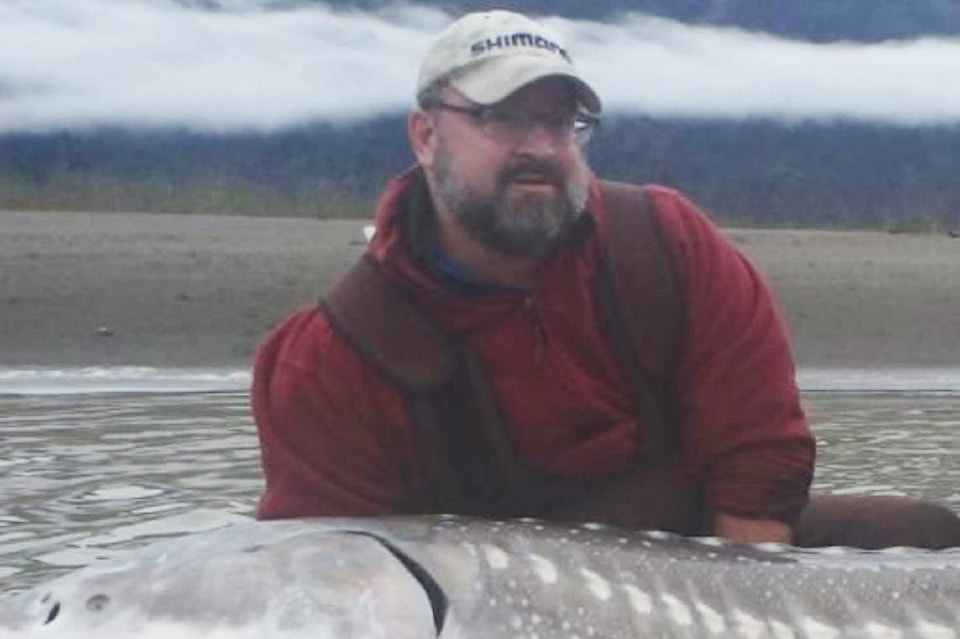Erin Stoddard has always been fascinated by fish — and sturgeon in particular.
The prehistoric species spends its lifetime growing from a centimetre-long juvenile to a fresh-water behemoth that can be more than three metres in length. They are fast-moving, predatory hunters that can even be seen jumping in the river.
“I’ve only been working with sturgeon for 15 years now, and it seems like hardly anything,” Stoddard, a fisheries biologist with the provincial ministry of Forest, Lands, Natural Resource Operations and Rural Development, said.
“I’m sure I’ll have just as many questions when I retire as I have now.”
Although the number of questions may stay the same throughout his career, Stoddard is hoping to find answers to some that can help sturgeon populations recover across the continent.
To do that, he has undertaken a 10-year study to find and track adult sturgeon as they move throughout the Fraser River, as well as the Pitt and Harrison Rivers, to see where the fish are going.
SEE ALSO: Sturgeon fishing closures coming to side channels in the Lower Fraser
The study started in 2013, when Stoddard and his team began a surgical operation to capture 40 adult sturgeon and fit them with battery-operated transmitters.
These transmitters, inserted into an incision in the sturgeon’s belly, release “pings” every two or three minutes with a unique identifier. The pings are picked up and recorded by receivers placed throughout the Fraser, Pitt and Harrison rivers, which allows Stoddard to see where the sturgeon are moving.
The results, he said, have been remarkable.
“We’re seeing movements that are way more than we expected,” he said. “Hundreds of kilometres within a year.”
Sturgeon use nearly every habitat in the Fraser River, as well as the adjacent Pitt and Harrison rivers, from the heavily-developed waters near Vancouver to the fast-moving areas in the Fraser Canyon.
| Erin Stoddard (right) conducting a surgery to implant a transmitter in an adult sturgeon. (Contributed) |
Some of the sturgeon Stoddard had tagged in the upper areas of his study range — near Hope, just downstream of Strawberry Island — were seen spending time each year in the more developed sections of the Lower Fraser, later travelling back up to the Hope region. Other fish would move into Pitt or Harrison Lake for a period of time before heading back out into the river.
When tagging sturgeon, “chances are you can catch it in one spot and catch it in the exact same spot the next year, or even the same year, and think that it didn’t move,” Stoddard said. “But in reality it probably moved a lot.”
Now in the sixth year of the study, there are still more questions Stoddard is hoping to have answered.
Why sturgeon travel the way they do is still unknown, although Stoddard expects it has something to do with food. (He doesn’t expect the data from this study to reveal the answer to that particular mystery.)
In addition, his data is only starting to reveal new information on how sturgeon spawn.
“It was always thought that sturgeon had a pretty strong fidelity or orientation towards a particular spawn site,” Stoddard explained. “But what we’re seeing is fish actually visiting multiple sites.”
The new information is interesting, but not overly surprising, he added.
“Sturgeon have been around for a long time, so putting all your eggs in one basket isn’t necessarily a good idea.”
SEE ALSO: Environmental groups launch petition to protect islands near Agassiz
Female sturgeon are believed to spawn every four to six years, but Stoddard said that’s not something biologists know for sure. He’s hoping that in the second half of his study, he might be able to catch a female spawning a second time, and identify spawning sites that may have been missed in earlier studies.
For Stoddard, the most important part of this study will come at the end, when his data can help sturgeon populations across North America.
“By understanding adult behaviour better, we can not only help better manage and understand our population, and hopefully work towards more recovery, but also help those other populations across North America,” he said.
“It’s important to be able to understand the fish so we can better understand what we can do to make sure we’re not impacting them and their habitat, so we can work towards their recovery.”
grace.kennedy@ahobserver.com
Like us on Facebook and follow us on Twitter
